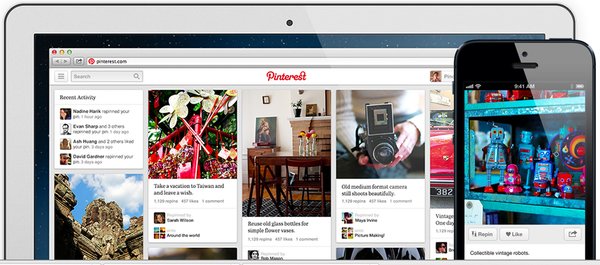Brands
The Secret Behind Why Pinterest Is from Venus
The received wisdom is that Pinterest is for women. Statistics support this, suggesting that 2012’s social media sensation attracts predominantly female users. But does that tell the whole story?
A wildly disproportionate number — 87% — of US sign-ups to Pinterest have been from women, according to data from comScore. If you contrast that with the struggling Google Plus — a service that SocialStatistics.com says has a 70% male user base — it would be easy to come to the conclusion that Google Plus is from Mars and Pinterest is from Venus.

It’s a conclusion that most analysts endorse. “In a sentence: It is Pinterest’s lack of linearity that puts off men and attracts some women,” says Lief Schneider, social media guru and director of Schneider Bartosch Communications.
Others have suggested that Pinterest’s visual strength lies behind its appeal to women.
“Pinterest is a beautiful site that lets imagery sing,” says James Howard, community manager at The Sense Network, “It deserves to be populated with gorgeous content, and women — in general — are superior seekers and curators of the finer things in life.”
These are easy conclusions to make when you look at Google Plus, a service where the ratio of men to women is flipped. Though boasting 100 million active users, the male skew could easily be attributed to the service’s tech-heavy focus. Many of its biggest hitters are technology bloggers or Silicon Valley CEOs, using the platform for top-down communication.
The differences are stereotypically male vs. female. Text vs image, technology vs art, information vs. conversation. But maybe that picture is too simple.
Female persuasion
Statistics from the UK suggest that Pinterest isn’t quite the babe magnet it seems to be across the pond. In the United Kingdom, the Pinterest user base is more balanced between the sexes, with a slight bias towards male users. Data from Visua.ly shows that 56% of British Pinterest users are blokes.
Digging deeper, it seems that Pinterest’s stateside sex appeal isn’t completely organic either. Part of its gender success came from clever marketing.

“(Pinterest) offered a batch of invites to the audience of Etsy (itself around 70% female) and cherry picked influential females to populate their boards,” says James Howard, “As a result boards were created around female interests skewing the appeal of the site towards women.”
In the UK, there was no such campaign. News of Pinterest’s existence crept out by virtual word-of-mouth, on blogs, Twitter and tech news sites. So, the UK stats show a more traditional spread of technology’s early adopters.
The gender that spends
Why did Pinterest so aggressively target women in the US? Perhaps they saw a growing market that online services neglect at their peril.
“Women — in general — are superior seekers and curators of the finer things in life.”
It’s a cliché that women like to shop, but online statistics show that it has some foundation. Women spend on average 20% longer on retail sites than men. Facebook may drive more through-traffic to these sites, but Pinterest users spend more.
Pinterest actively wooed and won a generation of women to its take on social media with clean design and savvy marketing. They fought hard for the female dollar. When targeting women consumers with content, it’s worth bearing that in mind — and so is Pinterest.
Get better at your job right now.
Read our monthly newsletter to master content marketing. It’s made for marketers, creators, and everyone in between.




